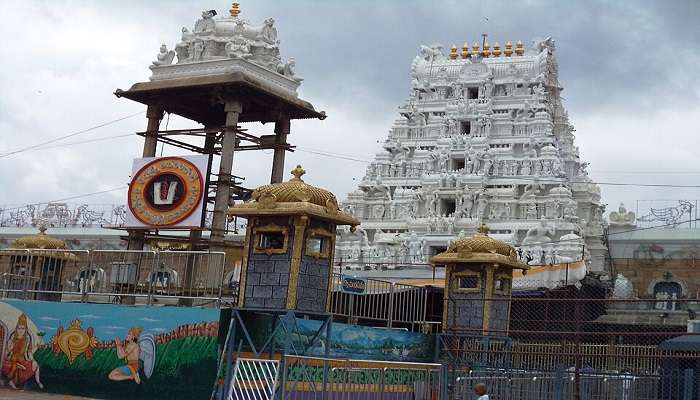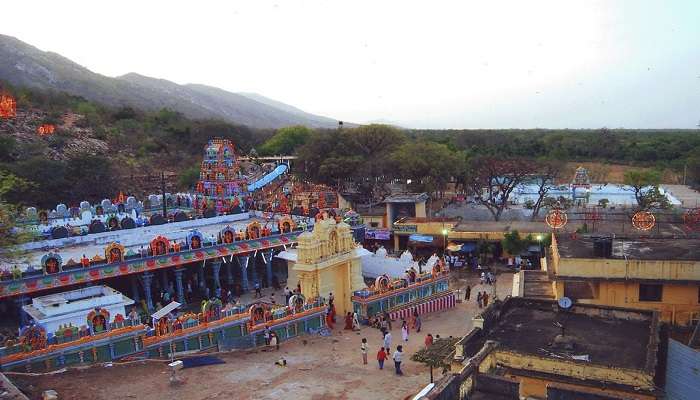Unveil The Beauty Of Buddhist Heritage At Amaravati Stupa In 2026

The Amaravati Stupa has been described as one of the most incredible and significant monuments of the Buddhist era in India. This historic site is situated in Andhra Pradesh, India, and is of great importance in Buddhist architecture and arts. The stupa was developed in the 3rd century BCE and is one of the world’s oldest and most famous destinations for Buddhism. This is known as the Mahachaitya, and it is the world’s largest identifying stupa. It has become an international icon of peace and enlightenment for scholars, historians, and tourists across the world.
Exploring Amaravati Stupa: Historical Significance
The Amaravati Stupa is a historical icon and a proud one in the history of the world. The structure was constructed during the period of Mauryan king Ashoka, who was avidly engaged in the dissemination of Buddhism in the Indian region. To sum up, the Amaravati Stupa history depicts the religious and cultural climax of ancient Andhra Pradesh. It also underwent several phases of extension and rebuilding for hundreds of years and then became a base for Buddhist monks and scholars.
1. The Historical Importance
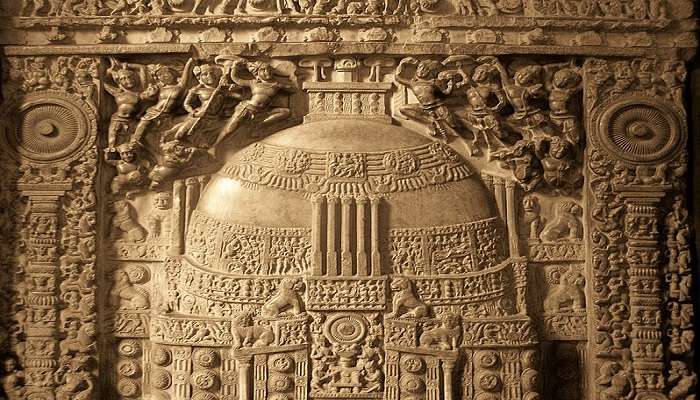
The Amaravati Stupa had a role to play in the practices of Buddhism in the southern part of India. It was initially built in a rather simple manner, but later it was enlarged by other dynasties, such as the Satavahanas.
Being one of the largest stupas in the region, in the Mahayana tradition, it was an important place for the preaching of the teaching and the practice of Buddhist rites; its relics contain the bones of the Buddha and the ashes of other holy monks. This makes the Amaravati Stupa important for Buddhists across the world for several reasons.
Tip: Talk to the locals and get to know more about the daily practices followed to keep up the legacy of the Buddha.
Also Read: Godavari Bridge
2. Location: A Journey To The Heart Of Andhra Pradesh
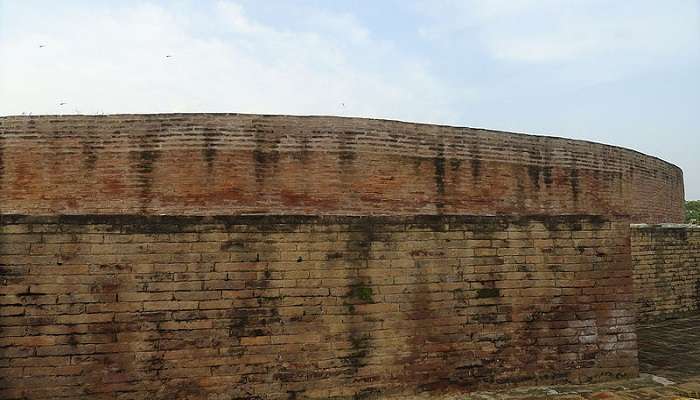
The Amaravati Stupa site is located in the town of Amaravati, which is on the bank of the Krishna River and is called Amaravati.
This strategic location not only ensured a calm atmosphere accompanying the processes of meditation and learning but also contributed to trade and message exchange. The geographical location of Amaravati benefited from the extension of the area of influence of Buddhist ideas and art along the trade routes.
Tip: Explore around and check for the nearby area to know more about the experiences of people around the Stupa.
The Architectural Marvels
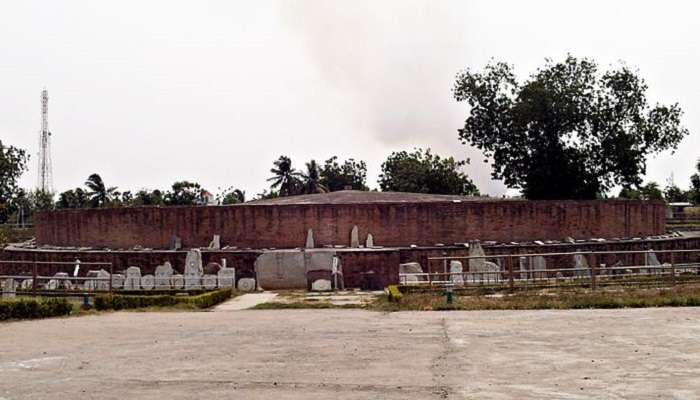
The design and art of the Amaravati Stupa are undoubtedly one of the most important archaeological discoveries in India. The architectural design and the superb workmanship on the carvings that adorn the building have made historians and archaeologists sit up to admire the feat. Its architectural design is almost a combination of different styles, which in a way represent the diverse cultural imprint on the development of the structure.
These are the key features of the Amaravati Stupa architecture:
- The combination of Amaravati Stupa structures is also dominated by the big dome that stands for the universe. The dome, which was built of bricks and later with marble, now has a set of small stupas and sculptures around it.
- The body of stupas is filled with intricate designs carved on the inner and outer surfaces of the structure. Inclusive of the images carved on the tower-like structure are images of the life of the Buddha, tales of previous births of the Buddha, Jataka stories, and several icons of Buddhism.
- Some of the early art of Buddhism is captured here through these carvings, which are widely believed to be some of the best.
Related Post: Restaurants In Khammam
Religious And Cultural Importance of the Amaravati Stupa
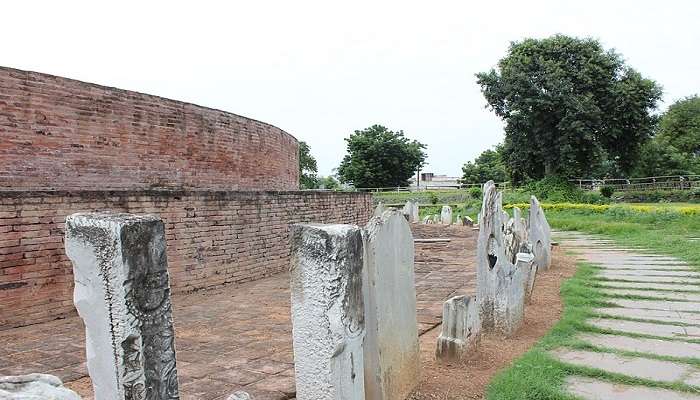
The Amaravati Stupa is important not only because of its size and architectural features but also because it signifies the religious and ethnic background of Buddhism. For centuries, this structure was the centre of ceremonies, pilgrimages, and scholars’ work. In writing, it represents the religion and architecture of Buddhism in times that are very distant from us, including information about the followers’ cults and ideas.
-
- Amaravati Stupa: Religious Significance
The Amaravati Stupa is important because it has been a major worship and pilgrimage hub for Buddhists. They believe that the structure holds the relics of the Buddha and, therefore, is considered a shrine to their followers.Many people from distinct areas of the globe come to venerate the stupa and search for a spiritual experience. Appended to the carvings and inscriptions are literary texts that provide instructions as well as encouragement to Buddhist believers. - Cultural Significance of the Amaravati Stupa
Thus, Amaravati Stupa’s influence on the region’s culture is quite significant. This school has shaped people’s culture, innovations in art and literature, and the structure of buildings in Andhra Pradesh and other states.Research on the stupa, especially the carvings and motifs, has been used by many artists and craftsmen for many generations. The stupa also has vital significance in the upkeep and dissemination of Indian Buddhist culture.
- Amaravati Stupa: Religious Significance
Related Post: Bhavani Island Vijayawada
How To Get To Amaravati Stupa?

The indivisible tourists, and especially those with a penchant for the history and spiritual side of Buddhism, should not miss the opportunity to visit the Amaravati Stupa. The site has been identified as having served the old world. Hence its historical value, and it also provides a quiet place for learning.
The location of the Carved Chamber at Amaravati Stupa is not very difficult to reach from most of the cities in Andhra Pradesh. The nearest city to Golugonda is Vijayawada, which is easily accessible by all modes of transport, like flight, train, and road. Amaravati is very close to Vijayawada, and one can very easily cover this distance with a short drive. The town also has relatively frequent bus connections, which creates a comfortable environment for travellers.
You May Also Like To Read: Gangavaram Beach
The Amaravati Stupa is one of the unique architectural masterpieces of old India, where devotees can get a brief idea about the opulent Buddhist culture of the past. It is not just history and relics that show its importance; something that Buddhism endorses as peaceful wisdom is reflected in it. It is time for you to plan your trip to Andhra Pradesh so as to behold with your own eyes the grandeur and spiritual calmness of this architectural marvel.
For our editorial codes of conduct and copyright disclaimer, please click here.
Cover Image Credit: Bhaskaranaidu for Wikimedia Commons
Frequently Asked Questions About Amaravati Stupa
What is the history of the Amaravati Stupa?
The Amaravati Stupa, or Mahachaitya, was established in the 3rd century BC during the rule of Mauryan Emperor Ashoka. However, it was continuously expanded and renovated by the subsequent dynasties, especially the Satavahanas, which made it an important centre of Buddhism in ancient India.
Where is the Amaravati Stupa?
This stupa is in the town of Amaravati, which is in Andhra Pradesh on the banks of the River Krishna in India. This advantageous positioning allowed commerce between countries, playing a significant role in Buddhist development.
What is the layout of the Amaravati Stupa?
The structured features of the Amaravati Stupa include a large dome with pellets of very fine ionic work, which has motifs of typical Buddhist scenes and motifs. It has richly carved gateways (Toranas) and railings depicting the rich tradition of art and craft from ancient India.
Why is Amaravati Stupa important?
The Amaravati Stupa is more significant than the other stupas because it was one of the major centres of Buddhist teachings and performances. They believe that it contains some relics of the Buddha and other famous monks, thus making it a holy place for Buddhists all over the world.
What is the cultural significance of the Amaravati Stupa?
Historically, culturally, and architecturally, the Amaravati Stupa has played a significant role in shaping art, literature, and architecture in Andhra Pradesh and other regions. It contains some of the most beautiful carvings and sculptures that have continued to stir artists and craftsmen for centuries; it bears testimony to the Buddhist art and culture of India.
People Also Read:
Dhamek Stupa Sanchi Stupa Dhauli Sanchi Stupa

With a passion for exploring and travelling to the roads long forgotten, experience the world through enthralling stories and adventures. Join me as I share my experiences at some of the world’s most popular tourist destinations and quench that pestering curiosity with something exciting!



